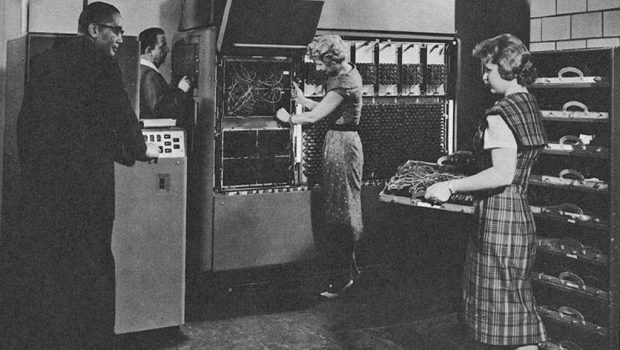When did some of those inventions arrive? – San Bernardino Sun
When Spanish military commander Pedro Fagés trekked north in 1772 from San Diego through the Inland Empire to the San Joaquin Valley, his company of men carried the most technologically advanced equipment and weaponry ever seen in the region.
Native Americans encountered on the journey were not overly impressed or intimidated by the equipment and weapons (muskets and swords).
The term “high-tech” is loosely used today to describe the most advanced technology available, but it’s really a subjective term based on what the new technology is compared to. Thousands of years ago, the earliest stone arrowheads would have been considered high-tech when compared to a basic sharpened stick, and a flintlock would have been high-tech compared to a bow and arrow.
Southern California was often late to the introduction of new tools, machinery, and weapons, because of its remote location in relation to industrial centers, but new technology did come to the region, sometimes in sensational fashion.
Here are some notable introductions of technology in the Inland Empire:
1852 – Steam-powered machinery
Charles Crismon of the newly established Mormon colony in San Bernardino procures an abandoned steam engine, and hauls it from the Mojave Desert to Waterman Canyon, where the first steam-powered sawmill is established.
1875 – Railroads
The Southern Pacific Railroad completes its extension from Los Angeles to Colton, and the first railroad begins operation in the Inland Empire. In September 1883, the California Southern Railroad completed its track extension from San Diego into San Bernardino. The first locomotive to steam into San Bernardino was California Southern No. 12, with Fred T. Perris at the throttle.
1878 – Telephones
Telephone service expanded eastward from Los Angeles, and new communication lines were extended to the Inland Empire cities in 1878. Colton and San Bernardino were among the first cities in the region to be connected to the outside world via phone lines. It was only two years earlier that Alexander Graham Bell was granted a patent for his first telephone.
1882 – Electricity
Pioneer developer George B. Chaffey Jr. set up a small electric generator at his Etiwanda ranch, and powered it with water from his irrigation canal. The generator powered two 3,000 candle-power electric-arc lamps at his ranch house, and was considered the first hydroelectric generation in the Western United States. A larger hydroelectric plant was built in Highgrove in 1886, and it powered 15 electric-arc lamps in Riverside and Corona. The Highgrove plant is generally regarded as the world’s first commercial hydroelectric generating station.
1899 – Automobiles
The first automobile in the Inland Empire was a 2-cylinder, 5-horsepower Haynes-Apperson, purchased by Redlands orchardist Cass Gaylord. The automobile made its debut on the streets of Redlands, and it functioned adequately on level ground and light hills. However, Gaylord was disappointed in the machine’s performance on steeper grades, and he sold the vehicle to a doctor in Riverside.
1911 – Airplanes
On Jan. 7, 1911, a fragile, cloth-winged biplane flew into the skies above the Inland Empire, and landed at Association Park in San Bernardino. The Inland Empire’s first aeroplane flight had been delayed for months, but the crowd of more than 12,000 quickly forgot their earlier frustrations when the pilot circled the park, and touched down on the grassy field.
The complete story of the Inland Empire’s first flight is filled with humorous mishaps, delays, mistakes, and bad luck, and it will be the subject of a future article.
1954 (circa) – Computers
Defining a specific date for the first computer to enter service in the Inland Empire is difficult, and it varies based on how the term “computer” was defined. For many years, the term computer was used to describe a mechanical device that counted or measured something such as gasoline pump flow, or basic number tabulations.
The military could have installed computers at Norton Air Force Base earlier, but by 1954, electronic computers were being installed in businesses in the Inland Empire. Although extremely basic by today’s standards, these massive and expensive computers were timesaving devices that could calculate large volumes of accounting information, banking, etc. In July 1954, the Southern California Gas Company installed a Remington Rand computer to tabulate gas usage and billing. On an ironic note, the gas company demonstrated their new American-made computer to a group of interested Japanese utility officials.
Now we need to ask, what will be the next great advancement in technology, and when will we get it?
Mark Landis is a freelance writer. He can be reached at Historyinca@yahoo.com








Gloss